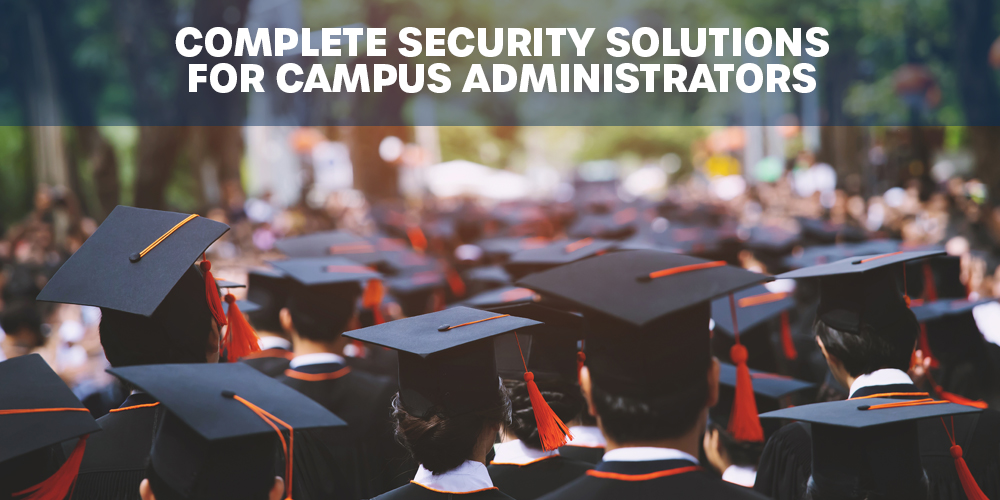[fusion_builder_container hundred_percent=”no” hundred_percent_height=”no” hundred_percent_height_scroll=”no” hundred_percent_height_center_content=”yes” equal_height_columns=”no” menu_anchor=”” hide_on_mobile=”small-visibility,medium-visibility,large-visibility” status=”published” publish_date=”” class=”” id=”” background_color=”” background_image=”” background_position=”center center” background_repeat=”no-repeat” fade=”no” background_parallax=”none” enable_mobile=”no” parallax_speed=”0.3″ video_mp4=”” video_webm=”” video_ogv=”” video_url=”” video_aspect_ratio=”16:9″ video_loop=”yes” video_mute=”yes” video_preview_image=”” border_size=”” border_color=”” border_style=”solid” margin_top=”” margin_bottom=”” padding_top=”” padding_right=”” padding_bottom=”” padding_left=””][fusion_builder_row][fusion_builder_column type=”1_1″ layout=”1_1″ spacing=”” center_content=”no” link=”” target=”_self” min_height=”” hide_on_mobile=”small-visibility,medium-visibility,large-visibility” class=”” id=”” background_image_id=”” background_color=”” background_image=”” background_position=”left top” undefined=”” background_repeat=”no-repeat” hover_type=”none” border_size=”0″ border_color=”” border_style=”solid” border_position=”all” border_radius_top_left=”” border_radius_top_right=”” border_radius_bottom_left=”” border_radius_bottom_right=”” box_shadow=”no” box_shadow_vertical=”” box_shadow_horizontal=”” box_shadow_blur=”0″ box_shadow_spread=”0″ box_shadow_color=”” box_shadow_style=”” padding_top=”” padding_right=”” padding_bottom=”0px” padding_left=”” margin_top=”” margin_bottom=”26px” animation_type=”” animation_direction=”left” animation_speed=”0.3″ animation_offset=”” last=”true” first=”true”][fusion_text columns=”” column_min_width=”” column_spacing=”” rule_style=”default” rule_size=”” rule_color=”” hide_on_mobile=”small-visibility,medium-visibility,large-visibility” class=”” id=”” animation_type=”” animation_direction=”left” animation_speed=”0.3″ animation_offset=””]
Campus administrators must continuously correlate institutional growth objectives to student and employee health which influence every decision they make.
[/fusion_text][fusion_button link=”https://accessnsite.com/projects/education/” text_transform=”” title=”” target=”_blank” link_attributes=”” alignment=”” modal=”” hide_on_mobile=”small-visibility,medium-visibility,large-visibility” class=”” id=”” color=”default” button_gradient_top_color=”” button_gradient_bottom_color=”” button_gradient_top_color_hover=”” button_gradient_bottom_color_hover=”” accent_color=”” accent_hover_color=”” type=”” bevel_color=”” border_width=”” border_radius=”” border_color=”” border_hover_color=”” size=”large” stretch=”default” icon=”” icon_position=”left” icon_divider=”no” animation_type=”” animation_direction=”left” animation_speed=”0.3″ animation_offset=””]Featured Projects[/fusion_button][fusion_separator style_type=”none” hide_on_mobile=”small-visibility,medium-visibility,large-visibility” class=”” id=”” sep_color=”” top_margin=”” bottom_margin=”20″ border_size=”” icon=”” icon_size=”” icon_circle=”” icon_circle_color=”” width=”” alignment=”center” /][fusion_text columns=”” column_min_width=”” column_spacing=”” rule_style=”default” rule_size=”” rule_color=”” hide_on_mobile=”small-visibility,medium-visibility,large-visibility” class=”” id=”” animation_type=”” animation_direction=”left” animation_speed=”0.3″ animation_offset=””]
Below are eight points in which these two areas of consideration demonstrate the need for a complete access control solution.
Financial
Educational organizations are facing more financial challenges this year than ever. Concerns about unbudgeted financial costs related to the pandemic, forecasting a possible recession, and prioritizing transformative changes for long-term sustainability are top of mind issues. Allocating the means to provide the secure campus today’s parents and students demand is paramount.
Additionally, some spending is motivated by the requirement to comply with an increasingly strict set of federal guidelines. One of these, the Clery Act, requires colleges to disclose their crime statistics and fines can be imposed for compliance failures. So, money is spent to meet the requirements and they could still face fines to the tune of several hundred thousand dollars if their security control fails.
Centralized access control is often passed over for a less expensive solution that is really just a stopgap measure that only addresses current or short-term needs. Those measures, which often involve guards, barcodes, magnetic stripes or low-frequency proximity, continue to dominate physical access control systems even though most campuses report their systems are aged, often malfunction and are not sustainable.
 Legacy systems may not be enough to help attract the best and brightest students that will pay enrollment fees. Out-of-date technology can also affect fundraising. Philanthropists are more likely to support a university that is keeping up with technology and providing a safe, welcoming environment. Alumni are less inclined to support a campus where they didn’t feel safe and valued.
Legacy systems may not be enough to help attract the best and brightest students that will pay enrollment fees. Out-of-date technology can also affect fundraising. Philanthropists are more likely to support a university that is keeping up with technology and providing a safe, welcoming environment. Alumni are less inclined to support a campus where they didn’t feel safe and valued.
Installing an integrated system that includes centralized access control requires an expenditure of time, money and other resources. However, the potential long-term benefits and efficiencies these systems deliver can yield an even greater return.
A centralized system consolidates spending, provides aggregated financial information, and gives a true picture of the total cost of access control across locations.
Integrating multiple systems enables campus administrators to manage both physical and logistical security with one platform, ensuring a more consistent approach. It also allows the IT infrastructure to increase access control coverage at a much lower cost than traditional deployments.
A centralized system also allows talent to be prioritized. Roles and responsibilities of team members can be consolidated, allowing personnel to be re-deployed to other priority projects their talents can serve.
The cost of a complete access control system is often seen as an obstacle. However, the true value is often not factored in. With a modern, unified system, ongoing costs often end up being lower than those of legacy systems because the additional capabilities of newer systems increase operational efficiencies across multiple departments.
Additionally, talent is prioritized as guards will be more efficient, data management will be simplified, administrators don’t have to meet individually with students, faculty and staff members to deliver or retrieve keys and staff and resources can be reallocated.
When looking for resources, campus security administrators need to look for a company that offers :
- An all-in-one security solution which combines the physical door openings with electronic access and monitoring capabilities to maintain total control and peace of mind
- Offers products that are compatible with all software platforms
- Boasts a network of partners and vendors that allows them to do the job efficiently and for the best price
Safety
Administrators are feeling pressure to do something to prevent tragedies on their campuses. They must work to assure parents and students that their campuses and facilities are secure, with systems and personnel in place to prevent trouble and respond quickly when it does occur.
Colleges and universities often consist of multiple buildings and campuses and must operate on a 24/7 schedule to meet students’ needs. A modern access control platform mitigates risk to ensure the enhanced safety of students and faculty.
Analog methods for monitoring and managing the day-to-day execution of the security policies limits efficiency, preventing those responsible from physically protecting large multi-building campus environments.
 In addition to personal safety on campus, students worry about their property being stolen. Security departments need to be able to monitor areas from where personal items, bicycles, cars and packages could be stolen. No matter how hard they try, there will still be areas that can’t be easily secured using analog methods.
In addition to personal safety on campus, students worry about their property being stolen. Security departments need to be able to monitor areas from where personal items, bicycles, cars and packages could be stolen. No matter how hard they try, there will still be areas that can’t be easily secured using analog methods.
The physical health of students and employees is a rising concern, too, as campuses welcome students back during the pandemic. Flexible solutions must be put in place to keep everyone safe.
Using the proper equipment and training for a networked master security station allows a large area to be covered by security protocols and boosts security over the entire campus. Not only can different locations communicate with one another, they can exchange data in real-time, allowing them to be better equipped to respond to security threats.
Depending on the equipment installed:
- Information about the geographic location of people and objects can be analyzed and displayed
- Insight into behavior patterns can help security officials recognize when something suspicious is happening on campus
- Staff is able to have conversations with visitors before remotely unlocking doors
- The geographic location of people and objects can be displayed
- Insight into behavior can assist security officials in recognizing when something might be amiss
Adopting advanced access control solutions gives organizations the enhanced security and adaptability needed to thrive in an expanding digital world.
At every turn of a key, swipe of a badge, electronic access point or keypad, data tells the story of where, when and who entered and exited campus buildings, thus increasing safety on campus.
When seeking a partner to assist in updating access control on campus, administrators should look for a company that:Designs, sources, installs, integrates, monitors, and maintains every door in your facility
- Offers integrated technology that allows the provision of safety and credentials for ease-of-use
- Assigns a dedicated project manager so the job is done right the first time, stays on budget and meets deadlines
- Combines all related security functions and data into one user-interface specific to user needs
- Provides a software that integrates easily with existing systems and processes
- Offers all-in-one integrated security suites that control access at every level
- Combines the hardware and intelligence necessary for controlling access
- Has extensive experience
Public Trust
Administrators say they anticipate negative reactions about their institution’s response to COVID-19, a perceived decrease in the value of higher education, and a decline in brand perception. They are burdened with preventing events that cause bad publicity.
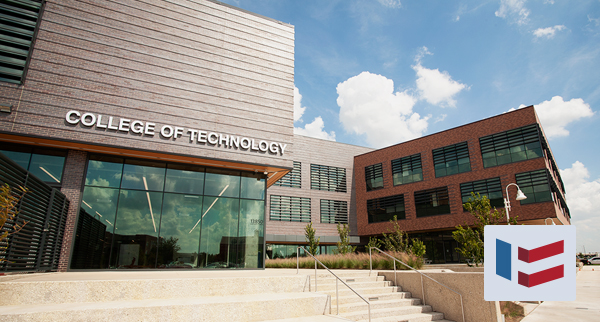 Public trust is a key consideration for students, parents and faculty when choosing a college for education or work. Access control infrastructure and technology has a huge impact on that trust. When an emergency occurs at a school, security professionals need to be able to work closely with law enforcement. Solutions need to communicate with one another and exchange data in real-time, allowing better responses to security threats.
Public trust is a key consideration for students, parents and faculty when choosing a college for education or work. Access control infrastructure and technology has a huge impact on that trust. When an emergency occurs at a school, security professionals need to be able to work closely with law enforcement. Solutions need to communicate with one another and exchange data in real-time, allowing better responses to security threats.
Additionally, students expect their college or university to know, teach and use the most up-to-date information and technology. Colleges and universities that use technology to their best advantage will be the institutions that establish the most effective programs and attract the best students.
Knowing that a campus incorporates a well-designed, centralized security operations center to monitor, assess, and respond to security threats, along with an integrated access control platform can ease any apprehension felt by faculty, students, parents and visitors.
The post-coronavirus campus life is going to be different. There will be people on campus that are more concerned about coming in contact with contaminated surfaces than ever before. Contactless credentials and touchless access control will be commended, possibly even expected.
An integrated intelligent security system can help ease concern felt by faculty, students, parents and visitors by providing security at every turn—from the physical door opening to all-in-one comprehensive safety monitoring and customizable access.
The best company to install or update an access control system will:
- Provide the technology that lets all of your access points talk to each other
- Combine essential door opening needs with innovative access and monitoring solutions to maintain total control and peace of mind
- Work behind the scenes to offer comprehensive capabilities with seamless security experience, so that visitors can feel safe
Intelligence Sharing
Facilities that implemented the inexpensive stop-gap access control measures that met only minimal needs must consider how they will communicate quickly and efficiently with other buildings on campus, law enforcement, security guards, faculty and endangered students. What data will they be able to distribute? Location of a mysterious package? A picture of a suspicious person? The breach of security in a particular building?
Does their system provide increased situational awareness that allows security personnel to respond quickly and effectively to prevent tragedy?
Institutions with numerous buildings on multiple campuses that utilize a unified campus security solution, where all physical security components are managed by the same platform, enjoy increased situational awareness and provide security personnel with the information necessary to respond quickly and effectively to any situation.
When researching access control systems, administrators should look for:
- A system that provides built-in data and complete security and control of your spaces
- Compatibility with all software platforms
- Collection and provision of insightful data in order to maximize capabilities
- Ability to determine where, when and who entered and exited buildings
Seamless Experience for Users and Operators
Campus environments consist of multiple buildings across large, open areas, each requiring different access permissions that are a particular challenge to manage. This requires security teams to be able to identify who should be allowed access, enable a free flow of authorized pedestrian traffic, provide a high level of security and a welcoming feel.
Security administrators must ensure that only authorized students, faculty and staff enter private campus locations such as dorms and training facilities. Some institutions have medical and chemical research spaces that require special access credentials which is another complication for the security teams.
Security managers also need to feel confident that their access security system won’t fail, especially when there are limited security staff on-site.
Also, how will documents, credentials and access keys be distributed and retrieved safely?
Avoiding onerous barriers to public ingress and egress for students and visitors on campus is a distinct concern. The ability to filter unauthorized people from sensitive areas is also essential. The ease of managing all access points needs to be as seamless as possible for school administrators. Creating an open and inviting environment that’s also secure is a function of the organization’s overall security strategy and design of the integrated systems.
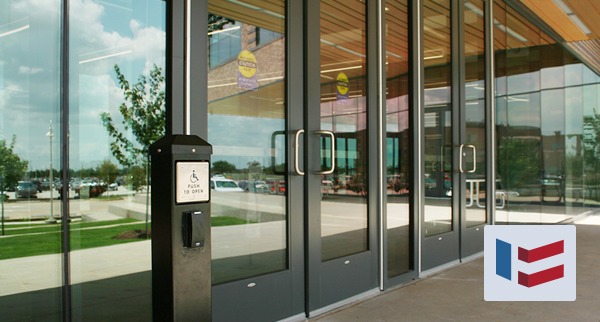 Mobile access also provides institutions the benefit of better control over credential management. Credentials can be pushed out to students, faculty and staff members via their mobile device. This automated process is preferable to individuals coming to the registrar’s office to pick up their printed ID card or worse yet, distributing, then collecting physical keys. If a student decides not to continue or a professor switches departments, the ability to delete or change access rights is instantaneous.
Mobile access also provides institutions the benefit of better control over credential management. Credentials can be pushed out to students, faculty and staff members via their mobile device. This automated process is preferable to individuals coming to the registrar’s office to pick up their printed ID card or worse yet, distributing, then collecting physical keys. If a student decides not to continue or a professor switches departments, the ability to delete or change access rights is instantaneous.
Creating an open and inviting environment that’s also secure, without creating cumbersome barriers to public access for students and visitors on campus, is an obstacle faced by security administrators at all colleges and universities. For those administrators searching for a solution, here are important things to consider:
- Does the system enhance security capabilities while maintaining the integrity of the original architecture?
- Is security and safety access integrated with point of sale access and record access?
- Is the system scalable and specifically designed for each campus?
- Can access be granted or removed from the credential holder?
- Does the company work directly with suppliers to find access control components to fit specific needs?
- Is customized training for your team and ongoing service included?
- Do the systems integrate with legacy platforms, partners, and IP technology to create a seamless experience?
Data Management
For many campuses, data management programs operate in silos. Not only does that require a significant amount of data input and manpower to keep databases up-to-date, oftentimes each silo uses their own system, making the ability to share data extremely complex or even impossible. As the number of data points that need to be monitored and assessed increases, the ability to share data easily becomes more important.
For example, campus-wide data must be gathered, integrated and submitted to prove compliance with federal guidelines in order to avoid fines.
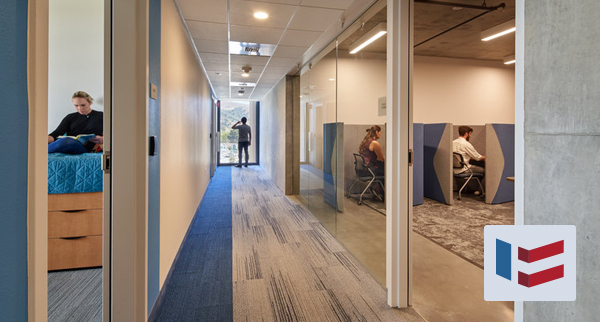 Using mobile credentials allows students, faculty and staff to enter facilities, purchase books, pay for lunch, checkout library items, buy a parking pass, print documents, do laundry, change classes and more – all enabled by system integrations into one access control platform managed centrally.
Using mobile credentials allows students, faculty and staff to enter facilities, purchase books, pay for lunch, checkout library items, buy a parking pass, print documents, do laundry, change classes and more – all enabled by system integrations into one access control platform managed centrally.
The incorporation of streamlined data integration between data management systems and access control/security management systems can make all the difference in addressing security challenges and can all be automated in an efficient and cost-effective way. For the executive charged with installing or upgrading a current access control system, consider these requirements:
- The technology must allow access points to communicate with each other and exchange data in real-time
- Data integration must be able to be automated in an efficient and cost-effective way
- Campus security officials must be able to easily manage security efforts from a centralized platform.
Integration
Security is a fundamental service that students and their families expect every college and university to provide. However, campus security must be tailored to each individual institution and its unique needs. One campus may need to support students moving between different buildings while another may need to ensure that students have ready access to regulated materials used for research. A third campus may need to manage crowds during concerts, festivals, controversial speakers and local games.
The system that controls those special considerations must also integrate with the security measures that cover classrooms, labs, dorms, and more.
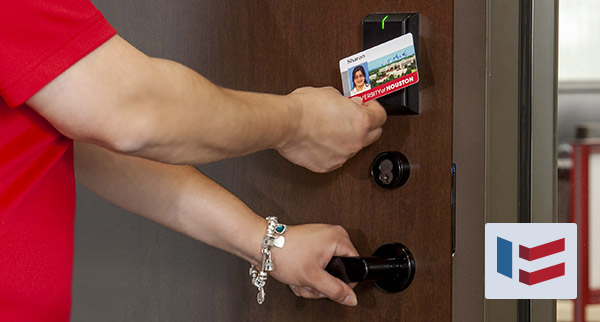 For all this to function in a cost-efficient manner, optimized integration is essential. For instance, a student or staff member can be required to swipe a card or present their smartphone to gain access to a building. Once inside, they can use the same approach to gain access to an elevator that takes them to their predetermined default destination(s), open their office or dorm room, check out library materials, pay for lunch, buy a book, and many more activities.
For all this to function in a cost-efficient manner, optimized integration is essential. For instance, a student or staff member can be required to swipe a card or present their smartphone to gain access to a building. Once inside, they can use the same approach to gain access to an elevator that takes them to their predetermined default destination(s), open their office or dorm room, check out library materials, pay for lunch, buy a book, and many more activities.
Additionally, a visitor to campus could request access to a building through a video entry security internal communication system. After discerning that the visitor has suitable credentials, the door can be remotely unlocked and verbal directions to their destination given. Alternatively, the visitor could be sent an email to download an app to their phone that would grant them access to the appropriate areas of the site they want to visit. The credential can be set to expire at a specific time or as the visitor leaves.
A complete access control system includes the ability to update and integrate with existing security offerings. Also, as campuses grow and build, the system must integrate with additional buildings and access levels and control thousands of individuals and their access, point of sale history, and records. Important features to look for are:
- Ability to integrate seamlessly with elite and existing systems
- Offers a simple and cost-effective solution with ongoing maintenance
- Ability to install complete systems and update existing ones
- Provides solutions as simple as the door install and as complex as an integrated electronic security system
The Future
Many legacy systems are unable to advance with technology and keep up with ever evolving threats. Higher education is always changing. Schools are always looking to provide students with new and exciting experiences.
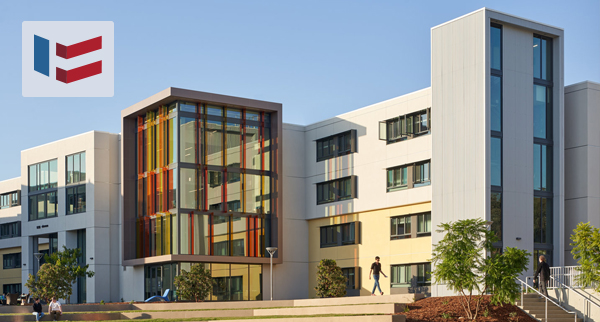 Administrators have the responsibility of making sure security technology incorporated today can physically grow with the addition of buildings and also integrate with new technology as it becomes available. It needs to be compatible with current systems and flexible enough to adapt as processes fluctuate.
Administrators have the responsibility of making sure security technology incorporated today can physically grow with the addition of buildings and also integrate with new technology as it becomes available. It needs to be compatible with current systems and flexible enough to adapt as processes fluctuate.
In the very near future, people will expect individualized interaction from security officials similar to what they get in other areas of their lives. Collaboration and integration will become expected.
Many institutions are not ready to initiate an integrated access control environment on campus, but all should be planning for this evolution. The change needs to be a process and a migration plan should be considered. It starts by understanding the hardware in place today and the best options for the future.
There is nothing more predictable about technology than how quickly it changes. In order to be prepared for this constant change, seek out a future-proof solution that makes it easier to adapt as new technology becomes available. The access control system needs to provide a seamless experience so people can safely work, learn, and live.
Installing a complete access control solution will save money, time, and hassle in the long run, ultimately allowing for enhanced security. In order to be prepared for the constant change of technology, seek out a future-proof solution that makes it easier to adapt as new technology becomes available. To be sure an access control platform will be able to conform to state-of-the-art advances, look for:
- Ability to understand the hardware currently in place and the best options for the future
- Adaptability
- Scalability
- Dedicated project manager
- Innovative solutions
- Ability to solve current and future security concerns
- Seamless system integration
American Direct has a history of success with educational projects. From beginning to end, we empower your team with totally integrated security solutions, providing you with the insights and tools needed to take control of your projects and create secure spaces for people to work, live and play.
Access Control | 28/8 Integration | Design Assist
[/fusion_text][fusion_text columns=”” column_min_width=”” column_spacing=”” rule_style=”default” rule_size=”” rule_color=”” hide_on_mobile=”small-visibility,medium-visibility,large-visibility” class=”” id=”” animation_type=”” animation_direction=”left” animation_speed=”0.3″ animation_offset=””]
Contact Us
For immediate assistance, please call 800-593-5310. If you would like information about our services, or would like to talk with someone about your project, please fill out the contact form below.
[/fusion_text][fusion_code]
[/fusion_code][/fusion_builder_column][/fusion_builder_row][/fusion_builder_container]